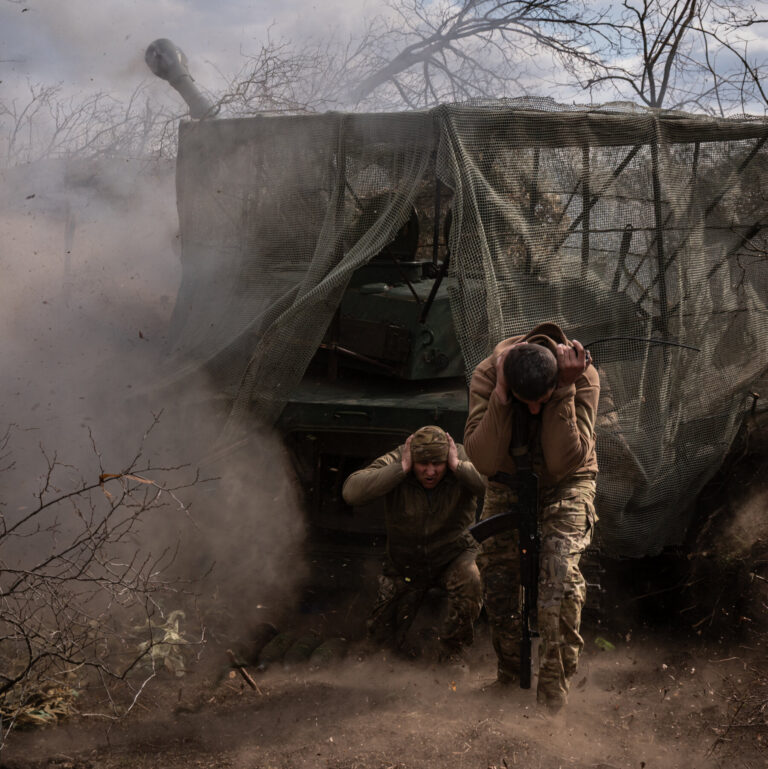When five men died on June 18, 2023, in the implosion of the submarine Titan during a dive to the Titanic's resting place, Paul-Henri Nargeolet's knowledge was also lost. It was the Nargeolet's 38th dive on the sunken liner. Known as Mr. Titanic, he helped recover thousands of artifacts that have been displayed in museums and at events around the world.
A year later, the company he worked for as director of underwater research is preparing a July expedition that will employ a pair of robots instead of people aboard submersibles to search for more treasure to recover in the future.
Jessica Sanders, president of the RMS Titanic which is organizing the expedition, said: “There is an art to artefact recovery and a human element that technology can never replace – and it shouldn't.” You said Mr. Nargeolet embodied that kind of competence.
On the other hand, he said, the results of the robotic expedition “will speak for themselves.”
The plans of Mr. Nargeolet's former employers show one of the most immediate effects of the Titan disaster: prioritizing robots to ply the icy depths over humans piloting the submarines. Robots are considered safer.
At the same time, however, players in the submarine world are pushing for greater international regulation to avoid another disaster. They want to fill the gap that OceanGate, Titan's maker, has exploited by avoiding the voluntary safety certifications that the industry uses to reduce substantial risks to deep divers.
The many fans of human-piloted submarines want to ensure that Nargeolet's legacy paves the way for a new generation of explorers. That could include future human pilots recovering other Titanic remains and paraphernalia — rivets, fine china, champagne bottles — that lie scattered across about three square miles of the North Atlantic seabed.
On his final dive, Mr. Nargeolet hoped to glimpse one of his longtime recovery targets: the wireless telegraph that relayed the Titanic's distress calls. The responding ships rescued hundreds of survivors, including women and children in lifeboats. In his autobiography, Nargeolet said the wreckage of the Titanic around the famous telegraph “will probably collapse in the short term”, making its rescue “even more urgent”.
Even James Cameron, known for “Titanic”, his 1997 film, is in favor of recovering the telegraph. “To actually put that instrument on public display would be very moving for millions of museum visitors,” he said in an interview last year.
In 1987, when Mr. Nargeolet made his first dive on the Titanic, underwater robots were rare. Then the Cold War spin-offs dramatically increased their capabilities and numbers. Robert D. Christ of the Marine Technology Society, an industry group, said there are now thousands of them and that perhaps a hundred or so could descend to the Titanic's depths, more than two miles down.
Large underwater robots are packed with lights, computers, cameras, mapping systems, sensors and manipulator arms. Most have long cables connecting them to the motherships. Above, operators use joysticks and monitors to orchestrate the action below.
The July expedition to the Titanic, which is about 370 miles off the coast of Newfoundland, Canada, will feature two underwater machines from the Chouest Group, a Louisiana-based family of companies that provide services to the offshore oil industry. In May it announced the acquisition of another company, which expanded its underwater fleet to more than 100 robots.
“For several years I wondered why anyone still built deep-sea submersibles,” said Tyler Schilling, an industry pioneer who founded Schilling Robotics in Davis, California, referring to the human-piloted craft. “I think the Titan situation is the only reasonable answer: People want adventure.”
The adventure factor, submarine advocates say, is real and healthy because it helps generate broad public appreciation for the wonders of the world's oceans.
A new generation of human-piloted submarines is believed to add to its appeal. Known as bubble submarines, they have spherical hulls of clear plastic that offer their occupants stunning panoramic views instead of glimpses through tiny portholes.
A bubble submarine strong enough to withstand the crushing pressures in the Titanic's depths is now taking shape. Triton Submarines, a Sebastian, Florida company, is building the submarine for Larry Connor, an Ohio billionaire and ocean adventurer. Triton claims he will set a record for how deep a bubble submarine can go.
The new submersible aims to show the world that, unlike last year's disaster, underwater craft can safely and repeatedly venture into the depths of the Titanic.
“A handful of years ago, something like this wasn't possible,” Patrick Lahey, president of Triton Submarines, said of the new submarine. But technological advances, he added, “allow us to do it safely.”
For example, Lahey said, continued advances in heating and shaping thermoplastic materials will allow Triton to make the transparent walls of the submersible incredibly strong. Their thickness, he said, will be 16 inches: a record. Lahey added that the two-person vessel will make its ocean-going debut in early 2026.
Triton as a company prides itself on what the Titan submersible lacked: expensive inspection and testing cycles by respected maritime organizations that specialize in certifying the safety of underwater vessels. It's an industry-wide code of conduct that experts now believe should become a global requirement because Titan's creators left out the voluntary step.
“It has to be mandatory,” Alfred S. McLaren, a retired Navy submariner, submarine pilot and president emeritus of the Explorers Club, said of the proposed upgrade. “Until these testing and certification rules are put in place, the seas will be open and stupid things will happen.”
Will Kohnen, who chairs the Marine Technology Society's Undersea Committee, agrees. “We have the technology in place,” he said. “We don't need to prove that we are safe. What we need is a regulatory framework that controls traffic and checks whether people have driving licenses.”
Mr. Kohnen said that about two hundred human-piloted submarines now ply the world's oceans – a small fraction of the population of deep-sea robots – and that only about ten could descend to the depths of the Titanic.
Until the Titan disaster, submarines enjoyed a notable safety record because companies adhered to the voluntary code. Despite thousands of deep dives, no person aboard a submersible has ever died while plunging into the sunless depths of the ocean.
Experts say the government investigation into what caused the Titan's implosion is likely to have to be concluded before new submarine rules are drawn up. This month, the head of the American investigation, Captain Jason D. Neubauer of the Coast Guard, said that the conclusions of his investigation and the publication of the findings could take another year or two.
The International Maritime Organization, the United Nations agency that sets standards for maritime safety, said it was awaiting those results before addressing the issue of global regulation of submarines.
“People will embrace the change,” Salvatore Mercogliano, a maritime historian at Campbell University in North Carolina, said of the new regulation. “Everyone has safety in mind.”
After the Titan disaster, echoing the new caution, the RMS Titanic decided to suspend its reliance on piloted vessels “until further investigation is carried out” into the cause of the implosion.
Ms. Sanders, president of the RMS Titanic, said new confidence in the safety of submarines will allow her company to employ piloted vehicles again, particularly for the arduous task of recovering the telegraph that sent the Titanic's distress calls .
An early version of the recovery plan called for a piloted vehicle to partner with three robots on an expedition to recover the legendary device.
With both robots and submersibles, Sanders said, her company's overall goal is to make sure the gems of the historic liner “are not lost at sea for a second time.”





